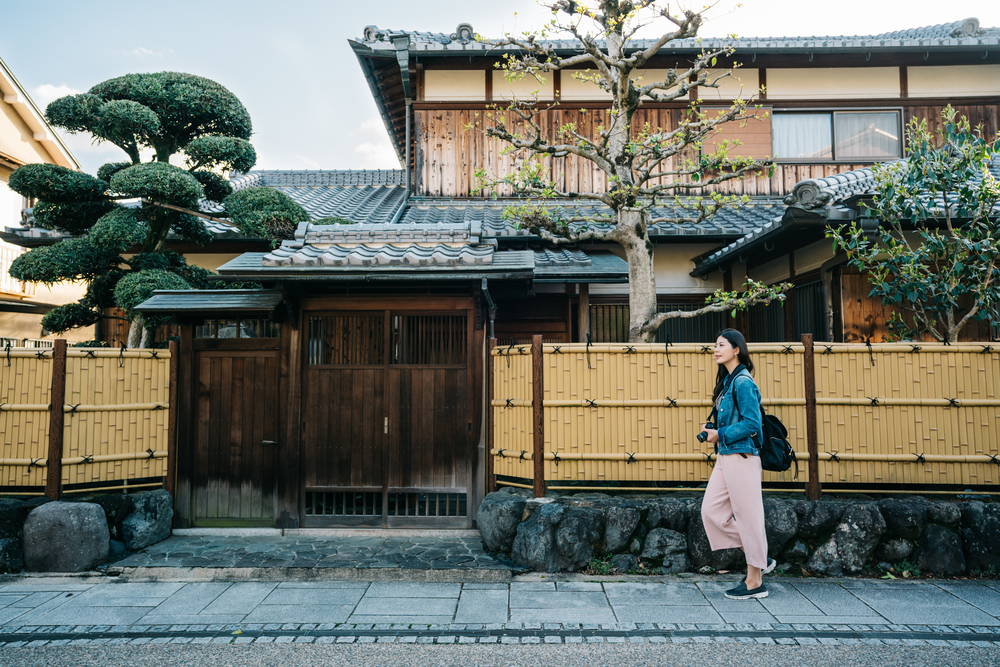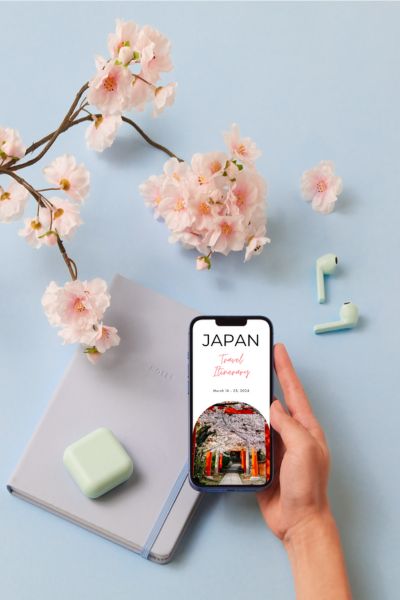Are you still figuring out what to put on your Japan packing list for spring? After reading this article you’ll know exactly what to bring with you! This packing list for Japan covers what you need to know about Japanese clothing style, what you may want to leave at home and essentials that should be in everyone’s bag.
Let’s go!
Basics of attire in Japan
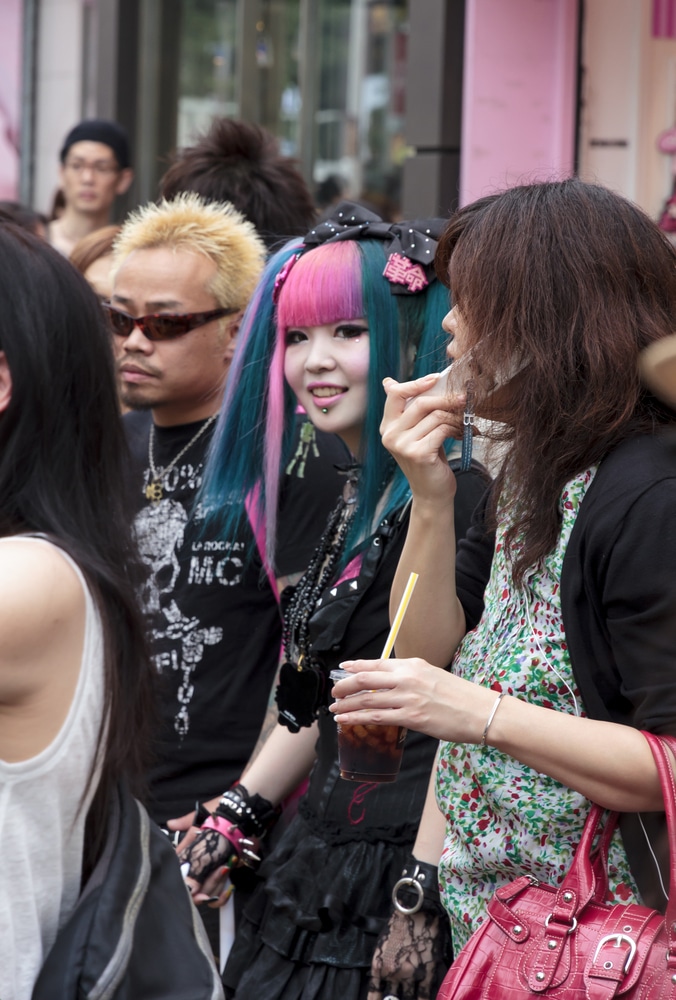
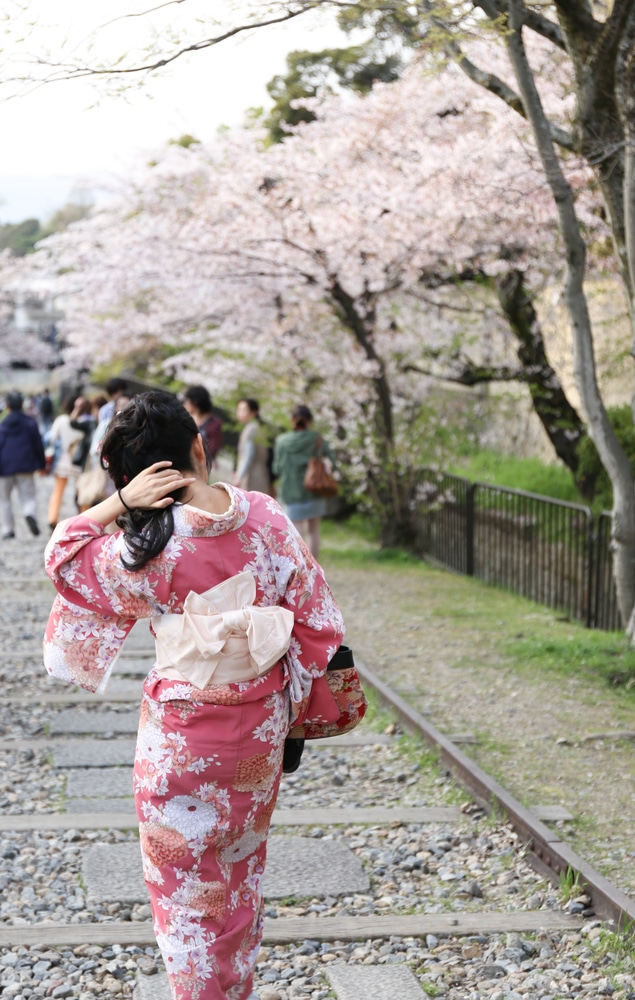
If you’ve never visited in Japan and are still planning out your visit, you might think that the Japanese outfits above are what you’ll see everywhere you go. In reality, not so much. You will see both of these extremes – young people in edgy or “cosplay” outfits in places like Harajuku and traditionally dressed women in Kyoto and other areas – but they’re not typical.
In reality, you’re much more likely to see people dressed like this woman (unless they’re in a business suit):

What do you need to know about the basics of attire in Japan? No matter what you do, you’ll definitely stick out among the locals. But if you want to be more harmonious with the local clothing culture, stick to neutral colors. On our trip to Japan we saw nearly every adult in black, white, navy, cream, tan, gray and various shades of denim. Since we we’re what to wear in Japan in spring, you’ll see plenty of women wearing pretty (but muted color) florals as well.
Of course that’s not to say that color conformity is a requirement. But my daughter’s hot pink pants and my dark teal jacket were often the most colorful garments around unless we were in very touristy areas! How much you stick to the more muted color palette is really up to you.
We didn’t see a lot of skin-tight clothing in Japan. Straight and trouser leg pants are more common for women and men than skinny jeans.
One thing that’s very different in Japan versus North America is that we basically never saw athletic (or athleisure) clothing worn casually as people walked out and about. You’re unlikely to get mean comments if you do, so make of that information what you will. I brought these with me for the flights and a few chilly days, but they’re clearly not athletic and I always paired them with longer tops.
What to wear in Japan in Spring
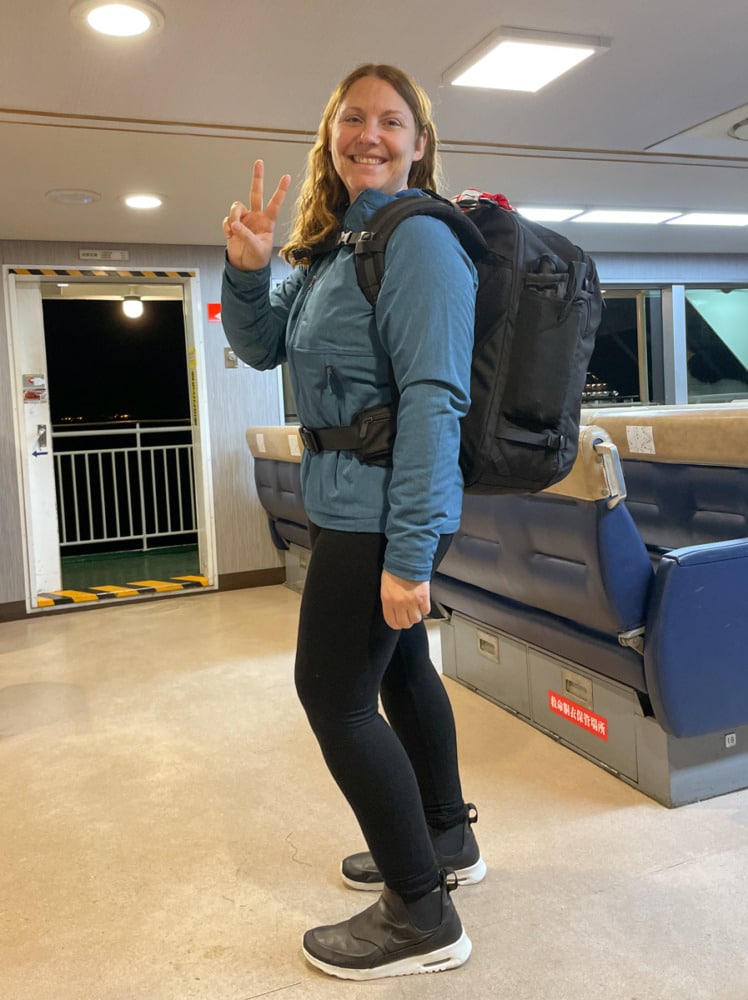
Japan weather in spring can be variable so be sure to plan for layers! In particular, spring season in Japan includes March, April and May with daytime temperatures in the 60s to low 70s and nighttime temperatures sometimes dipping into the 40s. You’ll experience a mix of sunshine and rain, so be prepared with several styles of spring outfits in Japan.
Given the intense nature of transportation in Japan, you’ll probably want to stick to a single carry-on suitcase and a backpack for smaller items. It’ll be much easier to take with you on crowded trains or cheaper to send via the awesome Ta-Q-Bin service if you avoid a massive checked bag. This excellent suitcase offers plenty of internal organization at a bargain price and has served us well on many trips!
While it may not be the most stylish example, in the outfit above I leaned into the reality of intense travel: in a single day we had traveled by bullet train, taxi, local rail and ferry while carrying several days of stuff and visiting Hiroshima. Did I mention that it was raining most of the time? A girl’s gotta do what a girl’s gotta do.
Shoes for Japan
If you’ve read this site before, you know that I like to start my packing lists from the bottom up. While it’s nice to have a good outfit, it’s essential to have the right shoes. What does that mean in the context of packing for Japan in spring? Keep the following in mind:
- Comfort – We clocked 20,000 steps most days in Japan, even with extensive use of public transportation and occasional taxis. I made the mistake of bringing a new pair of shoes I thought would be comfortable (I’d had them previously and they were great) but they were duds that just took up space in my suitcase.
- Water resistant – It will almost certainly rain at least once during your spring trip to Japan, so make sure that one of your pairs of shoes is water resistant. These shoes were perfect for rainy days and dry days alike, and were super comfortable! I wore them most days in Japan.
- Easy on/off – You’ll be removing your shoes every time you enter a temple, so make sure your shoes aren’t too fussy. I recommend wearing at least little socks with them.
- Versatile – To make the most of your limited packing space, choose shoes that can work with several of the bottoms you plan to bring.
Clothing for Japan in spring
As I mentioned above, you’ll want a variety of different tops including some that you can layer. A mix of short and long sleeves will allow you to prepare for all different weather conditions, including occasional sunny days!
Bring pants that will work with several of the tops and shoes you select – think about balancing silhouettes and mix-and-match versatility. Here area few specific pants to consider:
- Flare jeans – Flares are back, and this super comfortable, stretchy style is perfect for travel. They offer a great silhouette and the perfect shade of denim for spring! This similar style is a less expensive alternative.
- Mid-rise ankle pants – I love these super-light straight leg pants, and they’re easy to dress up or down. The material feels great and they travel well. I’d go with black for easy matching with tops, but you could also opt for olive or shale if you prefer a lighter neutral (especially if you’re visiting Japan in late spring when lighter colors are more common).
- Wool leggings – While leggings aren’t common as pants in Japan, these wool leggings are amazing for flights and long days sitting on the bullet train. Just wear a longer top with them for “coverage” and you’ll be in good shape. Because they’re wool you can wear them plenty of times between washes and they won’t smell bad (trust me, I speak from experience). If you’re visiting later in spring you might prefer these mid-weight leggings instead.
- Fleece lined rain jacket – While spring time in Japan is gorgeous as the country begins to bloom, be prepared for some rain. I wore a jacket almost identical to this one on our trip to Japan in spring and it worked perfectly to keep me warm and dry without being overwhelming. Later in spring you could opt for an unlined rain jacket instead but don’t leave it at home – April and May are two of the wettest months in Japan.
- Versatile necklace – This necklace is so awesome for travel that I bought it in two colors! It’s simple but allows lots of customization to work with any outfit. You can easily adjust the length and each necklace comes with five stones of your choosing.
- Pajamas – Nothing feels better at the end of a long day of travel in Japan than soaking in an onsen and then slipping into some comfy pajamas! Unfortunately I forget my own pajamas way too often, so I’m dropping my favorites here for you as a reminder. These feel like pampering every time I put them on!
Japan packing list: Year-round essentials
There are some travel essentials you need to include in your list of what to pack for Japan. Thse are items we used constantly during our trip!
- Compact umbrella – An umbrella was not on our family packing list for Japan and we ended up buying two while we were visiting. Oops! This model, which comes with a handy travel case, is great for the light showers of early spring. If you’re visiting Japan in April or May, this umbrella is a little less compact but heavier duty.
- International power adapter – I love this gizmo and so does every single person I’ve convinced to buy it! It accepts USB and standard plugs from around the world and allows you to use local outlets nearly anywhere. If you’ll want to charge a laptop off of it or do “fast charging” for your phone, I recommend grabbing the 65W version. Note that Japan uses the same plug shape as the US and Canada so you don’t need an adapter, but this saves you from bringing a ton of USB wall adapters.
- Portable phone charger – You will use your cell phone all day, every day. You need it for navigation, museum guides, menu translation, taking photos and more. We love this tiny portable charger so much that we bring two every time we travel and we routinely use them both. They plug directly into an iPhone without needing a cable, or you can grab an Android version as well.
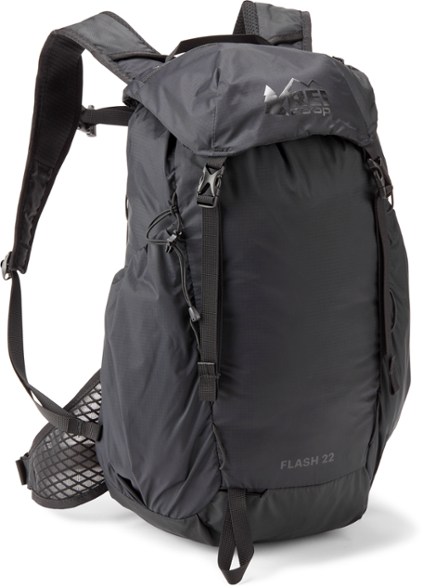
You’ll definitely want a good daypack for your trip to Japan, but I’ll leave it to you how cute vs how practical you want to be. We brought this backpack for its practicality – space for two water bottles on the sides, a zippered pocket up top for our phone chargers and a hidden side pocket for important documents. It’s also gender-neutral, so my husband and I could take turns if necessary. For a cuter option, choose this women’s backpack with lots of pockets and nice hardware.
If you’re planning to forward your luggage using Yamato’s Ta-Q-Bin or a similar service, I recommend putting AirTags in your items to keep tabs on them. The service is very reliable, but AirTags are a great comfort!
If you’re visiting Japan with a child under 10-12 years old, be sure to bring a folding car seat unless you plan to take public transportation like trains 100% of the time. There were quite a few times we found taxis to be more efficient and I was glad we had car seat vests for our kids.
Want to organize your plans?
Grab our fully-customizable Japan digital travel planner!
Find out moreJapan travel checklist
Be sure to have these mission-critical items on your Japan travel checklist!
Passport (and a place to stash it)
In order to visit Japan, you’ll need a passport that’s valid for the duration of your stay. Thankfully there’s no requirement for an extra 3-6 months of validity!
Tourists in Japan are required by law to carry their passports with them at all times. We used this backpack as our day bag because it has a very discrete zipper pocket on the side that’s the perfect size for passports, Japan Rail passes and other critical documents.
Proof of onward travel
Japan is also one of many countries that requires proof of onward travel. If you’re visiting Japan on a roundtrip plane ticket, it’s as simple as showing that you have a flight home within 90 days (the “visa free” period for most nationalities).
However, if you will be flying on to another country be sure that you have all your ducks in a row before you try to board your flight to Japan. If you’re headed to Australia, for example, you’ll need to have your Australian entry visa or Electronic Travel Authorization in addition to your flight.
Japan Rail Pass and other transportation passes
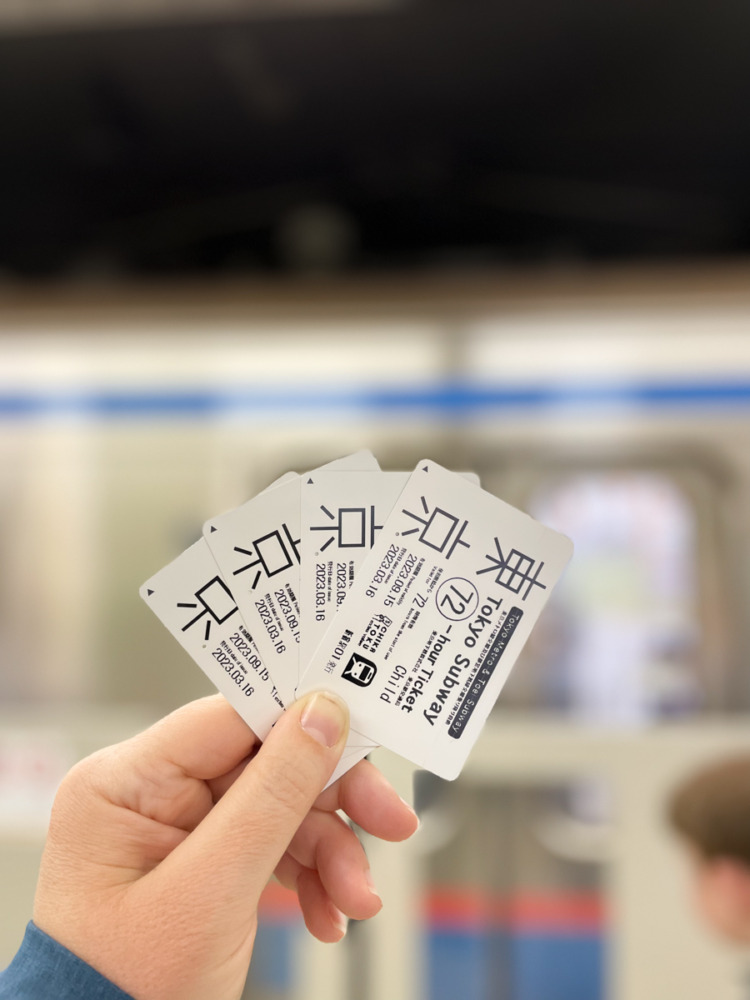
Depending on your Japan itinerary, you might find the Japan Rail Pass to be big a money saver. It’s certainly a convenience since it covers both long-distance trains as well as local JR lines within cities like Tokyo. It’s worth reading through our Japan travel tips to help you decide if the JR Pass is right for you. But if you want a JR Pass, know that you can order it up to 180 days before you want to start using it – just be sure to allow a few days for delivery. We ordered ours about 6 weeks before our trip to Japan and that worked perfectly.
You can also pre-order an IC card to use for local transportation. This is what Japanese people use, and if you have a smart phone you can put it in your digital wallet. Each person needs to have their own IC card, and if you plan to use a digital wallet (like Apple Wallet) each person needs their own device.
A third option to keep in mind are local transportation passes. These can be really useful alongside a JR pass, as Japan Rail doesn’t blanket the cities the way some of the other companies do. We found the 72 hour Tokyo subway pass incredibly useful, and if you’re spending a few days in Kyoto or Osaka you might want to pick up the Kansai Thru Pass.
While you’re at it, be sure to download the Japan Travel app. It’s provided for free by the Japan National Tourism Organization and is extremely useful. You can select which transit passes you’ve purchased and see what routes from A to B are covered and how much others will cost. It can be really useful as you’re planning in advance to help you decide what passes you really need!
Japan guidebook
While you should already have you Japan itinerary figured out and your hotels and activities booked, I strongly recommend bring a hard copy guide book with you as you explore Japan. First, the included maps can be a helpful backup to your cell phone navigation and give you helpful geographic context in massive cities. Second, and most important, they generally have really helpful information about the history and significance of each place you’ll visit. Without that background so many places in Japan can just blend together!
What luggage should you bring for Japan?
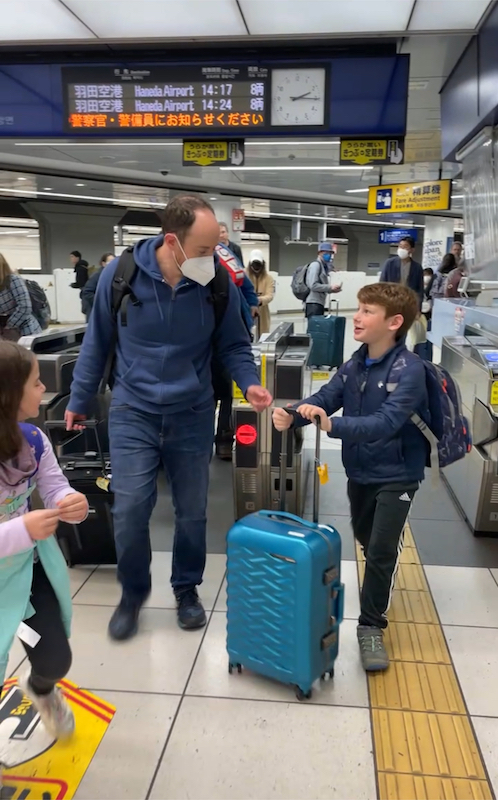
It can be tough to decide on luggage for a trip to Japan. On the one hand, a rolling suitcase is convenient for getting around airports and hotels. On the other hand, a backpack is helpful if you’re navigating busy train stations.
We split our luggage into three carry-on suitcases and one high-capacity backpack, plus smaller personal item backpacks for each person. That strategy worked out great! When we headed to Hiroshima and Miyajima Island for two nights. We brought two backpacks with just enough clothing and then shipped the rest from our Tokyo hotel to our Kyoto hotel via the Ta-Q-Bin service.
Your Japan spring packing list
Want to quickly shop all my recommendations in one place? Get them here!
What not to bring to Japan
There are a few things that don’t belong on your Japan packing list in my opinion!
- Huge suitcases – These will be hard to transport on cramped trains or in small taxis, and if you opt to ship them via Ta-Q-Bin they’ll be very expensive. On a full three hour bullet train ride I saw a full grown adult sitting criss-cross on her seat the entire time because there was no remaining place to put her massive suitcase other than right in front of her. Meanwhile there was plenty of room in the overhead racks for our small suitcases and backpacks.
- Uncomfortable shoes – You will walk a ton. There’s no doubt about it. The last thing you need is a cranky foot or a broken shoe! In most cases you probably won’t go back to your hotel to change between your daytime activities and dinner, so just leave the fancy uncomfortable shoes at home and save the space for souvenirs.
- Revealing clothing – Unless you plan to spend all of your time in very youth-oriented areas, overly revealing clothing won’t make you many friends in Japan. Most of the society is more culturally conservative, and you may offend people deeply when visiting temples and shrines.
- Tons of kids toys and snacks – Your kids’ eyes will pop out of their heads on every corner in Japan, so leave their usual treats and entertainment at home in favor of enjoying the local options.
- Swimsuit – Unless you’re visiting in summer and you know you’ll want to swim a hotel with a pool, save the space. Most hotels in Japan don’t have pools, and onsens are generally enjoyed in your birthday suit.
- Drugs – Japan hasn’t liberalized its drug policies and has become even stricter in some cases. Cannabis is not legal and carries serious penalties.
Planning your trip to Japan
I hope this Japan packing list give you the confidence to plan your own adventure!
Ready to dive in? Don’t miss these helpful resources for planning your own Japan trip!
- Buy your Japan Rail Pass
- 9 Tips for Japan Travel You Can’t Afford To Miss
- Best Things to do in Japan With Kids: A Kid’s Take
- Essential Japan Itinerary: 10 Days of Family-Friendly Travel
- Things to do in Tokyo With Kids: Itinerary for 4 Days of Old and New
- The Best Hotels in Tokyo for Families (and How to Choose Yours)
- Visiting Kyoto With Kids: 2+ Day Itinerary + Must-Read Travel Tips
- Best Family Hotels in Kyoto
- Awesome Pokémon Things to do in Japan
- 10 Japan Cultural Activities & Attractions For Your Bucket List
- Visiting the A-Bomb Sites in Hiroshima with Kids
Still planning? Pin this for later!


